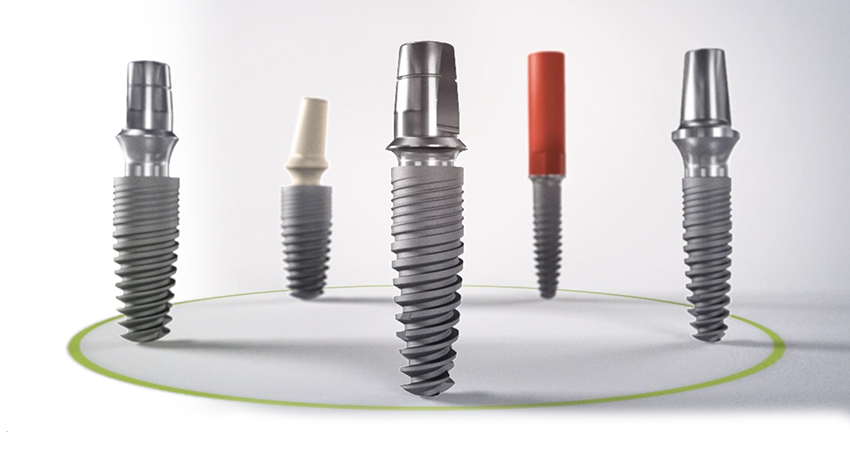Platform Switching
The platform switching method works by placing an abutment, smaller in diameter than the platform of the implant, on the implant during the pre-restoration, temporary restoration, or final restoration phases. The main purpose of this method is to prevent crestal bone loss, thereby providing improved aesthetics…. but how did this come about?
In 1991, seeing that matching diameter prosthetic components were not available, Implant Innovations suggested using wide-diameter implants with non-matching “regular” diameter platforms. Until then, wide implants were restored with the same “wide” diameter prosthetic components.
Long-term radiographic follow-up of these “platform-switched” dental implants has demonstrated a smaller than expected vertical change in the crestal bone height around them when they were restored conventionally with prosthetic components of matching diameters.
This first article by Richard J Lazzara & Stephan S Porter1 introduces the concept of platform switching and provides a foundation for the future development of a biological understanding of the clinical rationale for this technique.
Happy accident or foreseen innovation?
With this happy accident, the world of implantology welcomed a new member: the method of platform-switching. Increasing in popularity, this approach has considerable benefits which improve the experience of both dentist and patient.
Primarily, this method aids in preventing crestal bone loss and plays an important role in avoiding bacterial accumulation. The reduced diameter of the abutment relative to the implant reduces the risk of inflammatory cell infiltration.
Reverse Crown Abutment (concave profile)
One of the keys to success in dental implant therapy is the presence and preservation of marginal bone. Platform switching combined with a reverse crown abutment (concave profile) can increase the volume of soft tissue around the implant platform and provide longevity by decreasing bacteria infiltration.
While osseointegration is essential, aesthetics are also crucial. Crestal bone loss can lead to a disruption of soft tissue, affecting overall aesthetics. This is where platform-switching combined with a reverse crown abutment (concave profile) excels – it prevents bacterial infiltrate and gives the patient a beautiful smile they can be proud of.
One connection fits all
Removable prosthetic simplicity is hard to achieve, considering patient diversity and denture needs. With the same hex connection for all implants, there is less prosthetic complication, even for the most challenging of cases.
Dental implant treatment is a dynamic domain. New approaches and innovations are always emerging, but few have proven as effective as the 3 benefits of TAG’s core concept:
- Platform switching,
- Reverse crown, and
- One connection for all implants.
Maximum flexibility, crestal bone preservation, and ease of prosthetic attachment gives dental professionals and patients desired outcomes and confident smiles.
To learn more about the latest innovation in implantology, visit our website or follow us on social media – Facebook, Instagram, and LinkedIn.
We look forward to hearing your thoughts on this topic.
- Lazzara RJ, Porter SS. Platform switching: a new concept in implant dentistry for controlling postrestorative crestal bone levels. Int J Periodontics Restorative Dent. 2006 Feb;26(1):9-17. PMID: 16515092.
Keywords: tag dental, platform-switching, abutment, simplicity, aesthetics, flexibility, options, implantology, crestal, bone, osseointegration, switching, prevention


Comments are closed